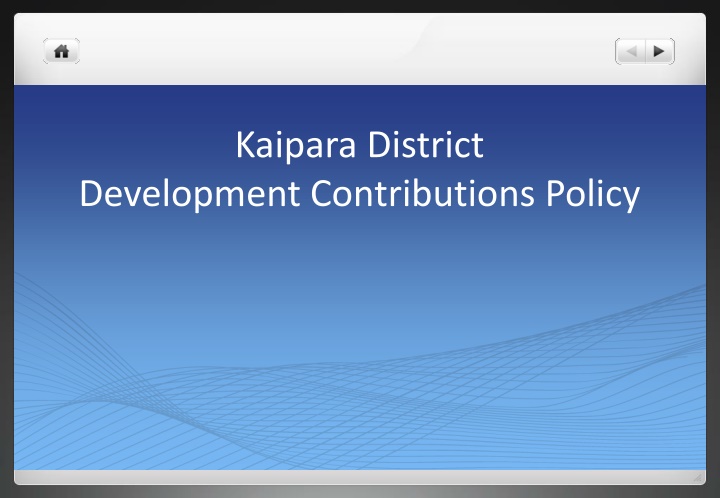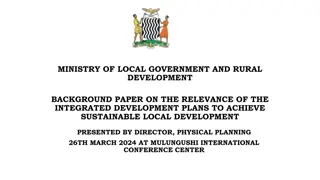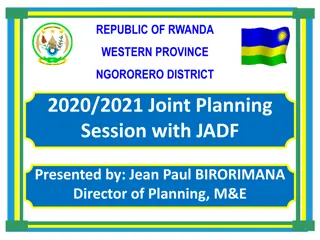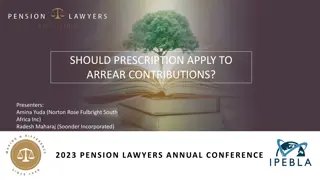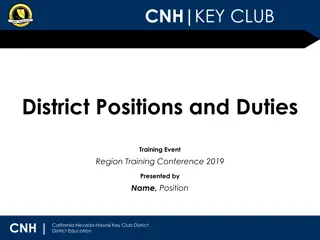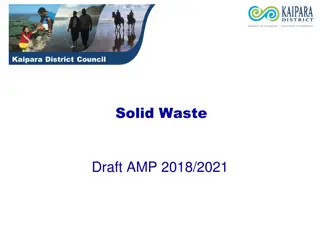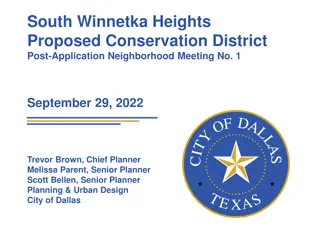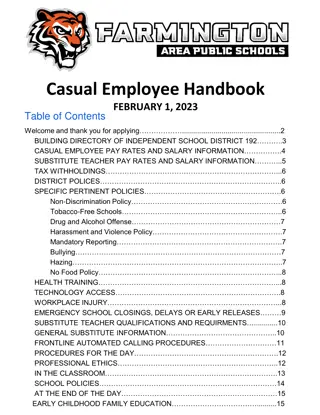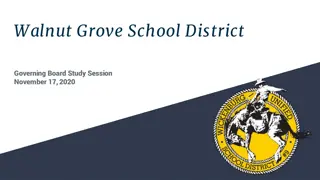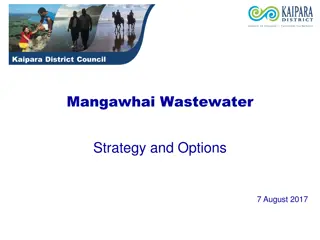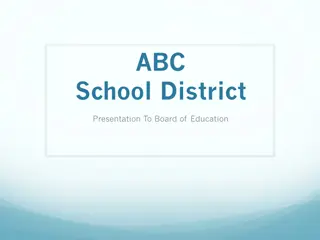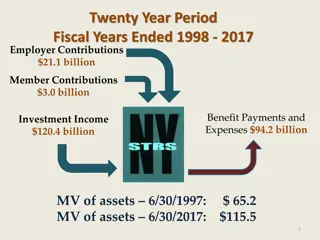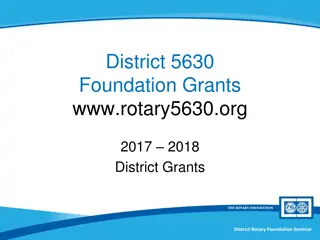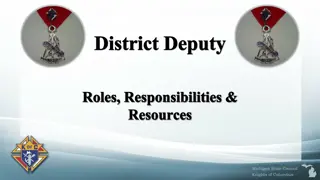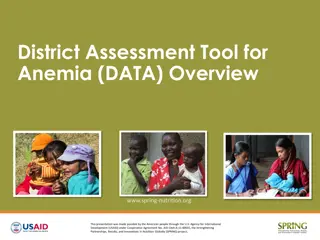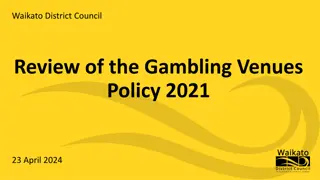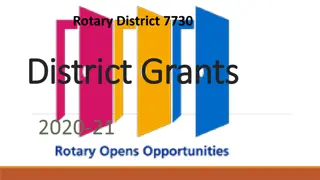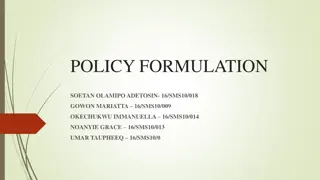Kaipara District Development Contributions Policy Overview
This content provides a detailed overview of the Kaipara District Development Contributions Policy, focusing on the legislation such as the Local Government Act 2002 and its amendments, practical application processes, and the complexity of the policy and its model. It also discusses the changes in legislation, principles, and upcoming amendments. Developers and local authorities must navigate these policies to ensure transparent and fair development practices.
Download Presentation

Please find below an Image/Link to download the presentation.
The content on the website is provided AS IS for your information and personal use only. It may not be sold, licensed, or shared on other websites without obtaining consent from the author.If you encounter any issues during the download, it is possible that the publisher has removed the file from their server.
You are allowed to download the files provided on this website for personal or commercial use, subject to the condition that they are used lawfully. All files are the property of their respective owners.
The content on the website is provided AS IS for your information and personal use only. It may not be sold, licensed, or shared on other websites without obtaining consent from the author.
E N D
Presentation Transcript
HomeButton.png Kaipara District Development Contributions Policy
HomeButton.png 2 Purpose Familiarise you with the legislation - LGA 2002 Focus on the 2014 LGA amendments what did they change? Have a look at the DC Policy itself Practical application processing development applications Look at the DC Model focus on Mangawhai Wastewater As will be seen, the DC policy and its model are complex. Necessary to ensure they are financially and legally sound. Legislation - lots of tick boxes At the same time policy and model must be clear and transparent to create confidence and avoid challenge
HomeButton.png 3 Legislation We use the Local Government Act 2002 s101, s102 and s106 and Part 8 - Subpart 5 - s197AA to s211 In general local authorities and developers have become used to DC Policies and legal challenges are rare Local authorities even before the 2014 changes tried to be transparent, flexible and fair Developers accept the need for well-funded infrastructure to support their developments
HomeButton.png 4 Legislation changes to the LGA2002 Amendments in 2014: Strengthened principles Further improved transparency schedules Required a reconsideration process to be written into policies (most TLAs already provided for this) Introduced a formal objections process Limited scope of capex that DCs can be required for Community infrastructure limited to halls, playgrounds, conveniences reserves (land and development of it) but only on residential development Allowed for development agreements
HomeButton.png 5 Legislation Principles (reinforced) Section 197AB (a) only new assets or additional capacity in assets and Council incurs expenditure (b) capacity life take up of the asset over time (c) cost share between existing (ILOS) and growth (AC) (d) use of contributions for purpose intended (e) and (f) transparent methodology and schedules (g) grouping by geographic area
HomeButton.png 6 Legislation Note 2017 changes to the RMA1991 Resource Legislation Amendment Act 2017 On 18/04/22, 5 years after Royal Assent, s108(2)(a), (9) and (10) ability to take financial contributions will be repealed (s175 of RLAA 2017) By then District Plan will need to have been amended (Schedule 4 of RLAA 2017) Consent lodged after that date no FC s - only DC s can be applied Consequential changes to section 106 of LGA to remove references to financial contributions (Schedule 5 of RLAA 2017) DC Policy will need to be amended accordingly to remove FC references and (if necessary) include reserve and other contributions currently taken under the District Plan
HomeButton.png 7 Kaipara FC/DC Policy Section 1 Introduction, purpose Section 2 Policy foundations Section 3 Practical application Section 4 Audit Section 5 - Cost allocation methodology Section 6 - Growth assumptions Section 7 Interest and inflation Appendices Appendix 1 - Development Contribution Activity-Funding Areas Appendix 2 - Assessment of Significant Assumptions Appendix 3 Glossary of Terms Appendix 4 - Demand Factors for Business Development Appendix 5 - Schedule of Assets
HomeButton.png 8 Kaipara FC/DC Policy Section 1 Combined FC/DC policy DC policy adopted - FC Policy in District Plan (1.2.1) is now operative DC s may be required only when development occurs and effect is to cause Council to incur expenditure (1.3.1) Approach to growth and development (1.4) Welcomed and encouraged Applies DC s selectively to activities/areas where growth expected and capex being incurred Use of DC s to fund only a part of capex related to growth
HomeButton.png 9 Kaipara FC/DC Policy Section 2 Policy foundations Requirement for paying DC s on development (2.1.1) Activities for which contributions may be required (2.1.3) Roading Wastewater treatment Water supply Stormwater management DC s are not payable for reserves and community infrastructure (2.1.5)
HomeButton.png 10 Kaipara FC/DC Policy Section 2 Policy foundations Statement (2.1.6) that Financial Contributions may still be payable BUT: No condition of resource consent to be imposed (works or funding of works) where that work is identified in the LTP and funded in whole or in part by DC s (2.2.1 and 2.2.2) No DC/FC double-take More slides to follow on Financial Contributions
HomeButton.png 11 Kaipara FC/DC Policy Section 2 Policy foundations Policy on existing lots or development Lots and development already legally established when policy became operative deemed to have paid a DC (2.13.5) Credit No such credit where water and wastewater not yet connected BUT exception for Mangawhai where a targeted rate to fund capital costs for the scheme has or will be paid. Exclusion of DC s on network infrastructure but office and workshops of network providers will still be liable (2.15)
HomeButton.png 12 Kaipara FC/DC Policy Section 2 Policy foundations Reference to remissions, postponements and refunds (2.16 and 2.17) No renewal, operating or maintenance costs in DC amounts (2.3.1) No subsidies, grants or works funded by third parties (2.3.2-4) Value of vested works cannot be used to offset DC s (2.4.1)
HomeButton.png 13 Kaipara FC/DC Policy Section 2 Policy foundations Council can require DC s for past spending and it does (2.5) Council can require for cumulative effects of numerous small developments (2.7) Appropriate sources of funding Section 101(3) obligations (2.8) Principles of cost allocation ILOS and AC Costs split (2.10)
HomeButton.png 14 Kaipara FC/DC Policy Section 2 Policy foundations Calculation period uses LTP and some past spending. Uses 1 July 2001 to 30 June 2045 to spread costs over time (2.11) Significant assumptions behind the policy reference to Appendix 2 (2.12) Use of contributions (2.14) Development agreements (2.20) In summary many checks and balances in law to be observed
HomeButton.png 15 Kaipara FC/DC Policy Section 2 Policy foundations Development contributions schedule (2.19) (Table 1) Amounts can vary between policies (even downwards) as growth outlook varies or capex changes projects, amounts, timing Also reference to Schedule of Assets (Appendix 5) and Table 2 Summary of Capital Expenditure TABLE 1 - SCHEDULE OF DEVELOPMENT CONTRIBUTIONS (INC INTEREST) Wastewater treatment Stormwater Water supply Roading TOTAL $ 218 $ 21,237 $ - $ 328 $ - $ - $ - $ - $ - $ - $ - $ 257 $ - $ - $ - $ - $ - $ 0 $ - $ - $ - $ 495 $ 495 $ 495 $ 495 $ 495 $ 495 $ 495 $ 495 $ 495 $ 495 $ 21,950 $ 823 $ 495 $ 495 $ 495 $ 752 $ 495 $ 495 $ 495 $ 495 Mangawhai Dargaville Te Kopuru Maungaturoto Kaiwaka Baylys Beach Glinks Gully Ruawai District Paparoa Note 1: These contribution amounts do not include GST $ - $ - $ - $ - $ - $ - $ - $ - $ -
HomeButton.png 16 Section 3 Practical application
HomeButton.png 17 Section 3 Practical application Step 1 - Statutory trigger (3.1.1): resource consent; building consent; authorisation for service connection; granting of a certificate of acceptance under section 98 of the Building Act 2004 Step 2 Test for development (3.1.1) has to be done activity by activity Roading Wastewater treatment Water supply Stormwater.
HomeButton.png 18 Section 3 Practical application Step 3 Calculate contribution using development demand measures in Table 3 consistent with the content of the policy that was in force at the time the application was submitted (3.1.6) s198(2A) of the Act Issue an assessment (3.1.3) Sections 3.1.7 and 3.1.10 contains remedies in cases of non-payment. Council: Can start normal debt recovery procedures Can prevent commencement or require activity to cease on a consented activity or building work Cannot withhold a building consent - only code compliance
HomeButton.png 19 Section 3 Practical application Table 3 - Guide to measuring units of demand Some features The Table 3 is used before and after development DC is only calculated on anything additional to what was already there One lot one unit of demand (UoD) One dwelling of two or more bedrooms one UoD Varying dwelling UoD depending on size and type of dwelling Introduces the new term accommodation unit
HomeButton.png 20 Section 3 Practical application Table 3 features Businesses are assessed using Gross Business Area or Impervious Area for Stormwater Smaller business sites (below 1000m2) attract lower UoD Factors used to convert business areas to dwelling equivalents Farm buildings Attract zero UoD Proposed lots or dwellings not to be connected to water and wastewater zero UoD both before and after development Special assessment provisions
HomeButton.png 21 Section 3 Practical application Part of Table 3
HomeButton.png 22 Section 3 Practical application continued Step 4 Special assessments (3.7.1) These are needed for serviced sites (camp grounds) and for cases where the development activity is not specified in Table 3 The nature and scale of the development must : be considered for each Council activity not as a whole; and take account of the relative effects as compared with other development types in Table 3 and the units of demand attributed to them
HomeButton.png 23 Section 3 Practical application Step 5 - Issue an invoice (3.1.5): Subdivision - at the time of application for s224(c) with payment required prior to issue Land use - at commencement or notification of commencement with payment required prior to commencement
HomeButton.png 24 Section 3 Practical application Step 5 - Issue an invoice continued: Building consent at the time of granting with payment due in 90 days or prior to issue of code compliance whichever is the earlier Service connection at time of approval with payment required prior to connection Certificate of acceptance at the time of granting General approach is to require the DC as late as possible
HomeButton.png 25 Section 3 Practical application continued Step 6 Remissions and postponements (3.5) The 2014 LGA changes introduced a reconsideration and objection process KDC policy has always allowed a consideration of remissions (reduction or waiver) and postponements Remission is of limited scope where the applicant has provided and or funded the same infrastructure that a DC has been required for
HomeButton.png 26 Section 3 Practical application continued Step 6 Remissions and postponements (3.5) Postponement (3.5.3) Where a building consent is required to give effect to the resource consent for land use May postpone (3.5.4) in the case of a subdivision consent and issue a s224(c) before payment The policy is quite open here but Council may register the DC under the Statutory Land Charges Registration Act 1928 Policy has provision for remission and postponement hearings These remain in the policy and we now have the formal LGA processes in a new section 3.6 as well
HomeButton.png 27 Section 3 Practical application continued Step 7 Reconsideration and objection process (3.6)
HomeButton.png 28 Section 3 Practical application continued Step 7 Reconsideration and objection process (3.6) Scope for reconsideration is wider - if the applicant believes that: the development contribution was incorrectly calculated or assessed; or the Council incorrectly applied the policy; or the information used to assess the applicant s development against the policy, or the way the Council has recorded or used it when requiring the development contribution, was incomplete or contained errors.
HomeButton.png 29 Section 4 Brief audit statement Refers to s94 of the Act (LTP audit provisions
HomeButton.png 30 Section 5 Cost Allocation Excel Model containing all District capital projects including Mangawhai wastewater projects Model description that follows uses 2015-25 LTP projects and any past projects with remaining capacity for growth Not a black box Series of Excel spreadsheets with all projects and programmes listed row-by-row Each project line can be easily examined to see how its costs are allocated Assumptions on costs, timing and allocation of costs can be clearly seen Model then adds up project costs due to growth in the next 10 years Divides by growth expected in 10 years
HomeButton.png 31 Section 5 Cost Allocation Project name, activity, any subsidies, planned capex from the LTP and past projects - DCP Catchment area/ number Spreadsheet then shares project costs between additional capacity for growth (AC) and improved level of service to existing (ILOS) Rating Area No. DCP Catchment Subsidy Level (%) 61% 61% 61% 61% 61% 0% 0% 0% 0% 0% 0% 0% 0% Uninflated 2015-16 Uninflated 2016-17 Uninflated 2017-18 100000 20000 53200 Uninflated 2018-19 Uninflated 2019-20 Uninflated 2020-21 Uninflated 2021-22 Uninflated 2022-23 Uninflated 2023-24 Uninflated 2024-25 AM's Indicative Driver Level of Service Growth Level of Service Project/Programme Name Parore West Rd/Waihue Rd intersection Settlement Road Mangawhai Road - seal widening Chipseals Bridge Replacements Pumpstaions Renewal - pumps, elect & mech Additional Capacity for Growth - Council Contribution Pumpstation Storage P3: Conc Pipe (no joint) Renewal - Haimona St Renewal AC 200mm Renewal - Raw water main - 400m of 8Km Effluent Discharge Options Additional Capacity for Growth - Council Contribution Activity Type ROADING ROADING ROADING ROADING ROADING WASTEWATER TREATMENT WASTEWATER TREATMENT WASTEWATER TREATMENT STORMWATER WATER SUPPLY WATER SUPPLY WASTEWATER TREATMENT WASTEWATER TREATMENT District Roading District Roading District Roading District Roading District Roading Dargaville wastewater Mangawhai wastewater Maungaturoto wastewater Dargaville stormwater Dargaville/Baylys water supply Maungaturoto water supply Mangawhai wastewater Mangawhai wastewater 19 19 19 19 19 15 18 13 3 8 11 18 18 1136000 592250 1136000 592250 1136000 592250 1136000 592250 1136000 592250 1136000 592250 1136000 Renewal 592250 Level of Service Renewal Growth Level of Service Renewal 190000 Renewal Renewal Level of Service Growth 75000 40000 30000 250000 100000 50000 100000 150000 1000000 1150000 1400000 1700000 180000 180000 445000 40000
HomeButton.png Years over which project is consumed Allocation of project based on cause and benefit (MATRIX) % Share of costs is applied to net project cost after any subsidy deducted Yes/ No question 32 Section 5 Cost Allocation Yes/No question is the project, even partially to provide additional capacity (AC) for development If No removed from DC calculation If Yes then becomes subject to cost allocation Start year and year in which capacity expected to be fully consumed - 2001 to 2045 Then start to allocate cost between the parties causing and benefitting s199(1) DC Hurdle - Is this capex, at least partially, required in relation to developments in order address the effect of the developments in requiring new or additional assets or assets of increased capacity? No Yes Yes No No No Yes No No No No Yes Yes Period over which Benefits Occur (s101(3)(a)(iii) Start Year (MIN 2012) Period over which Benefits Occur (s101(3)(a)(iii) End Year (MAX 2045) Combined Benefit and Causation Category Distribution of Benefits between the Community as a whole & Individuals (s101(3)(a)(ii) Net Project / Component Cost Project Start Year Causation of the Activity (s101(3)(a)(iv) Service level Deficiency Total Project/Programme Cost over 10-year period Subsidy/ Grant Growth % Project/Programme Name Parore West Rd/Waihue Rd intersection Settlement Road Mangawhai Road - seal widening Chipseals Bridge Replacements Pumpstaions Renewal - pumps, elect & mech Additional Capacity for Growth - Council Contribution Pumpstation Storage P3: Conc Pipe (no joint) Renewal - Haimona St Renewal AC 200mm Renewal - Raw water main - 400m of 8Km Effluent Discharge Options Additional Capacity for Growth - Council Contribution 0% 19% 19% 0% 0% 0% 100% 0% 0% 0% 0% 88% 100% 100% 82% 82% 100% 100% 100% 0% 100% 100% 100% 100% 13% 0% 103,600 20,720 55,115 9,172,064 4,781,827 80,175 42,760 32,070 267,250 7,130,520 155,700 445,000 41,520 63,196 12,639 33,620 5,594,959 2,916,914 40,404 8,081 21,495 3,577,105 1,864,912 80,175 42,760 32,070 267,250 7,130,520 155,700 445,000 41,520 Existing Community mainly benefit, w Existing Community mainly benefit, w 2017 2017 2017 2017 2045 2045 LOS, with some Growth capacity LOS, with some Growth capacity EnLg EnLg 0 0 0 0 0 0 0 0 New and Future Arrivals benefit only 2017 2017 2055 Growth capacity only NnGg New and Future Arrivals benefit only New and Future Arrivals benefit only 2015 2016 2015 2016 2055 2055 Mainly Growth capacity, with some L Growth capacity only NnGl NnGg
Project entirely caused by growth and of benefit only to growth Project entirely caused by need to improve levels of service to existing community and of benefit only to existing community HomeButton.png Combined project shared by growth and existing community 33 Section 5 Cost Allocation Cause/benefits matrix approach to AC/ILOS projects while growth may cause a project it can benefit wider community Percentage multiplied by net project cost determines AC cost AC cost then shared over time between ACn (growth units in the LTP period) and ACf, (future growth after the LTP) Calculation of Growth Component % Causation/ Benefits matrix CAUSATION (To what degree does 'Growth' cause the need for the Project?) Growth capacity only Mainly Growth capacity, with some LOS Mainly Growth capacity, with some Renewal Growth and LOS or Renewal cause equally LOS, with some Growth capacity Renewal, with some Growth capacity LOS only Renewal only LOS, with some Renewal Renewal, with some LOS BENEFIT (To what degree does 'Growth' community benefit from the project?) Code Factor Gg 1 Gl 0.75 Gr 0.75 G-LR 0.5 Lg 0.25 Rg 0.25 Ll 0 Rr 0 Lr 0 Rl 0 Code New and Future Arrivals benefit only Nn 1 100% 88% 88% 75% 63% 63% Unlikely Unlikely Unlikely Unlikely New and Future Arrivals mainly benefit, with some Existing Community benefit Ne 0.5 75% 63% 63% 50% 38% 38% 25% 25% 25% 25% Existing Community and New and Future Arrivals all benefit to the same extent Existing Community mainly benefit, with some New and Future Arrivals benefit 0.25 63% 50% 50% 38% 25% 25% 13% 13% 13% 13% E-N En 0.12 56% 44% 44% 31% 19% 19% 6% 6% 6% 6% Existing Community benefit only Ee 0 Unlikely 38% 38% 25% 13% 13% 0% 0% 0% 0%
HomeButton.png 34 Section 5 Cost Allocation in summary Past? project? with? Surplus? capacity? ? LTP? Project? Value? of? subsidy? or? other? source? of? funding? 200000? 400000? 800000? Value? consumed? by? past? growth? Value? a ributable? to? ILOS? (Improved? level? of? service)? 1200000? Value? a ributable? to? Future? growth? (a er? the? LTP)? 600000? 1000000? Value? a ributable? to? addi onal? capacity? (AC)? for? Future? growth? (a er? the? LTP)? ? ? 1100000? Value? a ributable? to? New? growth? in? LTP? Value? a ributable? to? AC? for? New? growth? in? LTP? Only part of the cost of past and proposed LTP projects is attributable to New growth in the LTP (yellow) All other sources of revenue have been excluded such as: Revenue expected from future growth after the LTP Revenue from subsidies and revenue from rates because existing community benefits
HomeButton.png 35 Section 5 Cost Allocation - Example The notion of causer pays fails in law Wrong to say We only did the project because of growth - growth must pay Ignores wider benefits North Shore Busway case pivotal As growth was the cause of the project, Council allocated 94.2% of its cost (after subsidies) to growth - just 18% of total cost Judicial Review found Almost no recognition of existing congestion Benefit of use to existing community - allocating just 0.1% North? Shore? Busway? 500,000,? 0.1%? 76,500,000,? 18%? NZTA? contribu on? ? Developers? Backlog? (General? Rates)? 348,000,000,? 82%?
HomeButton.png 36 Section 6 Growth assumptions Growth worksheet gives growth in rating units for each activity funding area Rating units - good measure of infrastructure demands from development - regularly updated LTP assumptions used to provide long-term estimates to 2045 Separate model to establish Mangawhai growth units from new dwellings expected But not all new development may be eligible for DC s a rate may have been paid on the lot already Rating Unit Projection Sheet Rating Units (LTCCP) 2014/15 (Base Year) Ten_Year Growth Rating Charges (N) Rating area no. Rating area name and Catchment name Annual Growth to 2018/19 Annual Growth thereafter 2015/16 2016/17 2017/18 2018/19 2019/20 2020/21 2021/22 2022/23 2023/24 2024/25 3.00% 3.00% 0.40% 0.00% 0.50% 1.00% 0.00% 0.40% 0.00% 0.00% 0.50% 0.00% 0.50% 1.00% 0.40% 0.00% 0.00% 3.00% 1.00% 2.00% 1.50% 1.29% 1.29% 0.40% 0.00% 0.50% 1.00% 0.00% 0.40% 0.00% 0.00% 0.50% 0.00% 0.50% 1.00% 0.40% 0.00% 0.00% 1.29% 0.50% 2.00% 1.50% 4,016 2,649 2,241 240 365 184 271 2,862 4,092 2,699 2,250 240 367 186 279 2,873 4,169 2,750 2,259 240 369 188 279 2,884 4,255 2,806 2,268 240 371 189 279 2,896 4,352 2,870 2,277 240 373 191 279 2,908 4,458 2,940 2,286 240 375 193 279 2,920 4,575 3,018 2,295 240 377 195 279 2,932 4,702 3,101 2,304 240 379 197 279 2,944 4,844 3,195 2,314 240 381 199 279 2,956 4,997 3,296 2,323 240 383 201 279 2,968 1,058 698 1 2 3 4 5 6 7 8 9 10 11 12 13 14 15 16 17 18 19 20 21 Mangawhai? (Harbour? restoration? rating? area) Mangawhai? stormwater Dargaville? stormwater Te? Kopuru? stormwater Maungaturoto? stormwater Kaiwaka? stormwater Baylys? Beach? stormwater Dargaville/Baylys? water? supply Glinks? Gully? water? supply Ruawai? water? supply Maungaturoto? water? supply Mangawhai? water? supply Maungaturoto? wastewater Kaiwaka? wastewater Dargaville? wastewater Te? Kopuru? wastewater Glinks? Gully? wastewater Mangawhai? wastewater District? Roading District? stormwater Paparoa? stormwater? 3939 2598 2232 240 363 182 271 2851 85 260 459 0 429 180 2341 198 25 1548 14135 5953 67 91 0 20 19 8 117 85 260 461 85 260 464 85 260 466 85 260 468 85 260 471 85 260 473 85 260 475 85 260 478 85 260 480 85 260 482 0 0 23 0 0 0 0 0 0 0 0 0 0 0 431 182 433 184 435 185 438 187 440 189 442 191 444 193 446 195 449 197 451 199 22 19 95 2,350 198 2,360 198 2,369 198 2,379 198 2,388 198 2,398 198 2,407 198 2,417 198 2,427 198 2,436 198 0 0 25 25 25 25 25 25 25 25 25 25 1,565 14,206 6,072 1,582 14,277 6,193 1,599 14,348 6,317 1,618 14,492 6,443 1,640 14,636 6,572 1,664 14,783 6,703 1,690 14,931 6,837 1,718 15,080 6,974 1,749 15,231 7,113 1,783 15,383 7,255 235 1,248 1,302 68 69 70 71 72 73 74 75 76 77 10
HomeButton.png 37 Section 7 Interest and Inflation DC Model includes interest on growth related capital expenditure Recovers all interest by end of the DC calculation period 2045 Except for Mangawhai Wastewater interest on past spending is regarded as funded as an operating expense excluded from the model Mangawhai Wastewater interest and finance costs incurred since construction have been included in the DC amounts DC calculation uses the inflated capital costs in the LTP DC amounts - 3 separate yearly prices to take account of price variations in life of current DC Policy
HomeButton.png 38 Financial contributions
HomeButton.png 39 Financial contributions Development contributions are Council s primary source of funding growth Development contributions and financial contributions cannot be taken for the same purpose (s.200 of the Local Government Act 2002) District Plan Chapter 22 Section 22.1.1 states: Council considers that Financial Contributions will generally only be imposed: in areas of the District where the Development Contributions Policy does not apply; or where the Development Contributions Policy does not address the type of adverse effects generated by the development or activity. In summary - require FC s with caution AND they will fall away by 2022
HomeButton.png 40 Financial contributions - scope District? Plan? Chapter? Reference? Chapter? 22? ? ? ? ? ? ? Purpose? Significant? Heritage? or? Ecological? Features? Renewable? Energy? Activities? Enhancement?or? Riparian? Protection? (Land? Use? Activities)? Transport? Networks? (including? roads)? Reserves? Network? utilities? 22.10.2? 22.10.3? 22.10.4? 22.10.5? 22.10.6? 22.10.7?
HomeButton.png 41 Financial contributions FC policy says they must be handled case by-case Some basic questions to ask first: What will the FC be used for? Can the developers to do it themselves/provide suitable land? Is the asset manager planning to do the job is it on the capital programme? Is the capital work used in the DC calculation?
HomeButton.png 42 Financial contributions Particularly cautious requiring a FC for Transport and Network Utilities - Sewerage, Stormwater and Water supply (Sections 2.10.5 and 2.10.7 of the FC Policy) Council takes DCs for these activities in some (not all areas) Do not require an FC if the job is DC funded FCs for protecting and enhancing: Significant heritage or ecological features Features supporting renewable energy activities Riparian areas Less likelihood of a conflict with DC s
HomeButton.png 43 Financial contributions If the asset managers say they are not intending to do the work Do not require an FC There will be no means of spending the contribution and mitigating the effects The FC policy states that the FC is: calculated on the basis of providing Council the financial means to undertake the works etc Estimated costs of upgrading roads and network utilities There must be something tangible to cost ReservesFC uses an area based formulae but Council still needs a planned programme of acquisitions and works before a reserve contribution can be taken
HomeButton.png 44 Financial contributions
